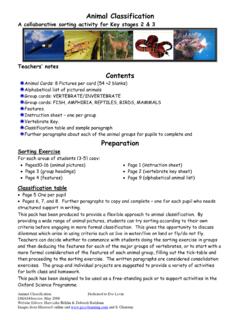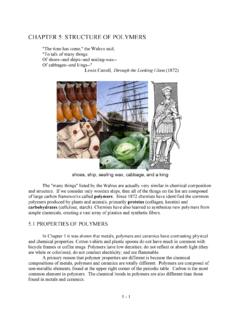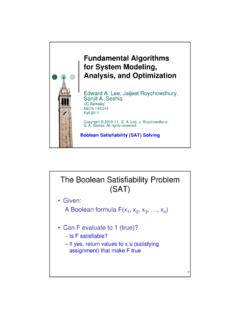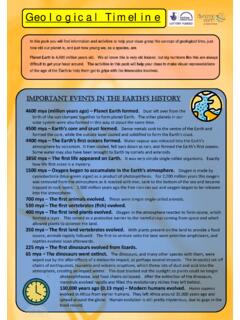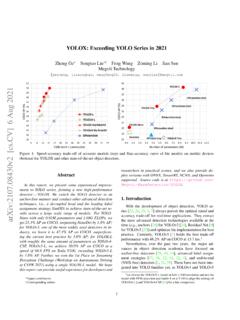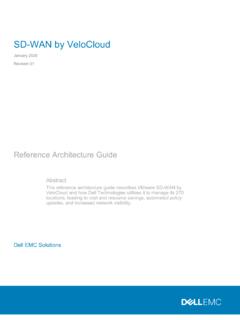Transcription of for Efficient Long-Term Video Recognition Compute (GFlops)
1 MeMViT: Memory-Augmented Multiscale Vision Transformerfor Efficient Long-Term Video RecognitionChao-Yuan Wu*, 1 Yanghao Li*, 1 Karttikeya Mangalam1, 2 Haoqi Fan1Bo Xiong1 Jitendra Malik1, 2 Christoph Feichtenhofer*, 1 equal technical contribution1 Facebook AI Research2UC BerkeleyAbstractWhile today s Video Recognition systems parse snapshotsor short clips accurately, they cannot connect the dots andreason across a longer range of time yet. Most existingvideo architectures can only process<5 seconds of a videowithout hitting the computation or memory this paper, we propose a new strategy to overcomethis challenge.
2 Instead of trying to process more framesat once like most existing methods, we propose to processvideos in an online fashion and cache memory at eachiteration. Through the memory, the model can referenceprior context for Long-Term modeling, with only a marginalcost. Based on this idea, we build MeMViT, a Memory-augmented Multiscale Vision Transformer, that has a tem-poral support 30 longer than existing models with more Compute ; traditional methods need>3,000%more Compute to do the same. On a wide range of settings,the increased temporal support enabled by MeMViT bringslarge gains in Recognition accuracy consistently.
3 MeMViTobtains state-of-the-art results on the AVA, EPIC-Kitchens-100 action classification, and action anticipation and models are available IntroductionOur world evolves endlessly over time. The events at dif-ferent points in time influence each other and all together,they tell the story of our visual world. Computer visionpromises to understand this story, but today s systems arestill quite limited. They accurately parse visual content inindependent snapshots or short time periods ( , 5 sec-onds), but not beyond that. So, how can we enable accuratelong-term visual understanding? There are certainly manychallenges ahead, but having a model thatpracticallyrunsonlongvideos is arguably an important first this paper, we propose a memory-based approach forbuilding efficient Long-Term models.
4 The central idea is that16 Compute (GFlops)406080100 Temporal Support (s)0132740 Baseline modelMeMViTTraditional Long-Term mAP mAP(a)Traditional Long-Term modelsvs. our method, (GFlops)406080100 Temporal Support (s)0132740 Baseline modelMeMViTTraditional Long-Term mAP mAP(b)MeMViTFigure a class of Video models that models longvideos efficiently. It has a significantly better trade-off than tra-ditional methods, which increase the temporal support of a videomodel by increasing the number of frames in model input (Fig. 1a).MeMViT achieves efficient Long-Term modeling byhierarchicallyattendingthe previously cached memory of the past (Fig.)
5 1b).instead of aiming to jointly process or train on the wholelong Video , we simply maintain memory as we process avideoin an online fashion. At any point of time, the modelhas access to prior memory for Long-Term context. Since thememory is reused from the past, the model is highly effi-cient. To implement this idea, we build a concrete modelcalledMeMViT, a Memory-augmented Multiscale VisionTransformer. MeMViT processes 30 longer input dura-tion than existing models, with only more Compute . Incomparison, a Long-Term model built by increasing the num-1 [ ] 30 Nov 2022ber of frames will require>3,000% more Compute . Fig.
6 1apresents the trade-off comparison in concretely, MeMViT uses the keys and values of a transformer [74] as memory. When the model runs onone clip, the queries attend to an extended set of keys and values , which come from both the current time andthe past. When performing this at multiple layers, eachlayer attends further down into the past, resulting in a sig-nificantly longer receptive field, as illustrated in Fig. further improve the efficiency, we jointly train amem-ory compression modulefor reducing the memory , this allows the model to learn which cues are im-portant for future Recognition and keeps only design is loosely inspired by how humans parselong-term visual signals.
7 Humans do not process all signalsover a long period of time at once. Instead, humans processsignals in anonlinefashion, associate what we see to pastmemory to make sense of it, and also memorize importantinformation for future results demonstrate that augmenting Video modelswith memory and enabling long range attention is simpleand very beneficial. On the AVA spatiotemporal action lo-calization [32], the EPIC-Kitchens-1001action classifica-tion [13,14], and the EPIC-Kitchens-100 action anticipationdatasets [13, 14], MeMViT obtains large performance gainsover its short-term counterpart and achieves state-of-the-artresults. We hope these results are helpful for the communityand take us one step closer to understanding the interestinglong story told by our visual Related WorkVideo understanding modelsaim to parse spatiotempo-ral information in videos.
8 Popular approaches in the pastdecade include the classic works that use handcrafted fea-tures [12, 16, 20, 36, 39, 55, 75 77], recurrent networks [17,34, 42, 45, 52, 65], and 2D- [78, 79, 85] or 3D-CNNs [4,23, 24, 27, 45, 45, 56, 69, 72, 73, 81, 87, 90].More re-cently, methods built upon the Transformer [74] architec-ture (the vision transformers) have been shown promisingresults [2, 3, 22, 51, 54].Vision transformers[2, 18, 19, 22, 31, 49, 70, 71, 88]treat an image as a set of patches and model their inter-actions with transformer-based architectures [74]. Recentworks adding vision priors such as multi-scale feature hier-archies [22, 31, 49, 80, 88] or local structure modeling [9, 18,49] have shown to be effective.
9 They have also been gen-eralized from the image to Video domain [3, 22, 51, 54]. Inthis work, we build our architecture based on the MultiscaleVision Transformer (MViT) architecture [22, 44] as a con-1 The EPIC-Kitchens-100 dataset is licensed under the Creative Com-mons Attribution-NonCommercial International instance, but the general idea can be applied to otherViT-based Video Video modelsaim to capture longer-term pat-terns in long videos ( ,>30 seconds). To reduce thehigh computational cost, one widely studied line of workdirectly models pre-computed features without jointly train-ing backbones [1, 17, 29, 84, 89].
10 Another potential direc-tion designs efficient models [33, 38, 46, 85, 90, 92] to makecovering more frames feasible. More related to our workis the less-studied middle ground that builds a memory-like design that still allows for end-to-end training but hasgreatly reduced overhead [8,40,41,83]. For example, Long-Term feature bank -based methods extend standard videobackbones to reference Long-Term supportive context fea-tures [53, 83]. However, these methods capture only final-layer features and require two backbones, two rounds oftraining and inference computation. MeMViT flexibly mod-els features at arbitrary layers with minimal changes tostandard training methods and only requires one Video modelingarises naturally in applicationssuch as robotics, AR/VR, or Video may use an image-based method ( , [60]) to parsea Video frame-by-frame, to consider longer-term context,most existing works use causal convolutions [6, 10, 37],RNNs [17,48], or feature fusion [8,91].
![arXiv:0706.3639v1 [cs.AI] 25 Jun 2007](/cache/preview/4/1/3/9/3/1/4/b/thumb-4139314b93ef86b7b4c2d05ebcc88e46.jpg)

![arXiv:1301.3781v3 [cs.CL] 7 Sep 2013](/cache/preview/4/d/5/0/4/3/4/0/thumb-4d504340120163c0bdf3f4678d8d217f.jpg)
![@google.com arXiv:1609.03499v2 [cs.SD] 19 Sep 2016](/cache/preview/c/3/4/9/4/6/9/b/thumb-c349469b499107d21e221f2ac908f8b2.jpg)






